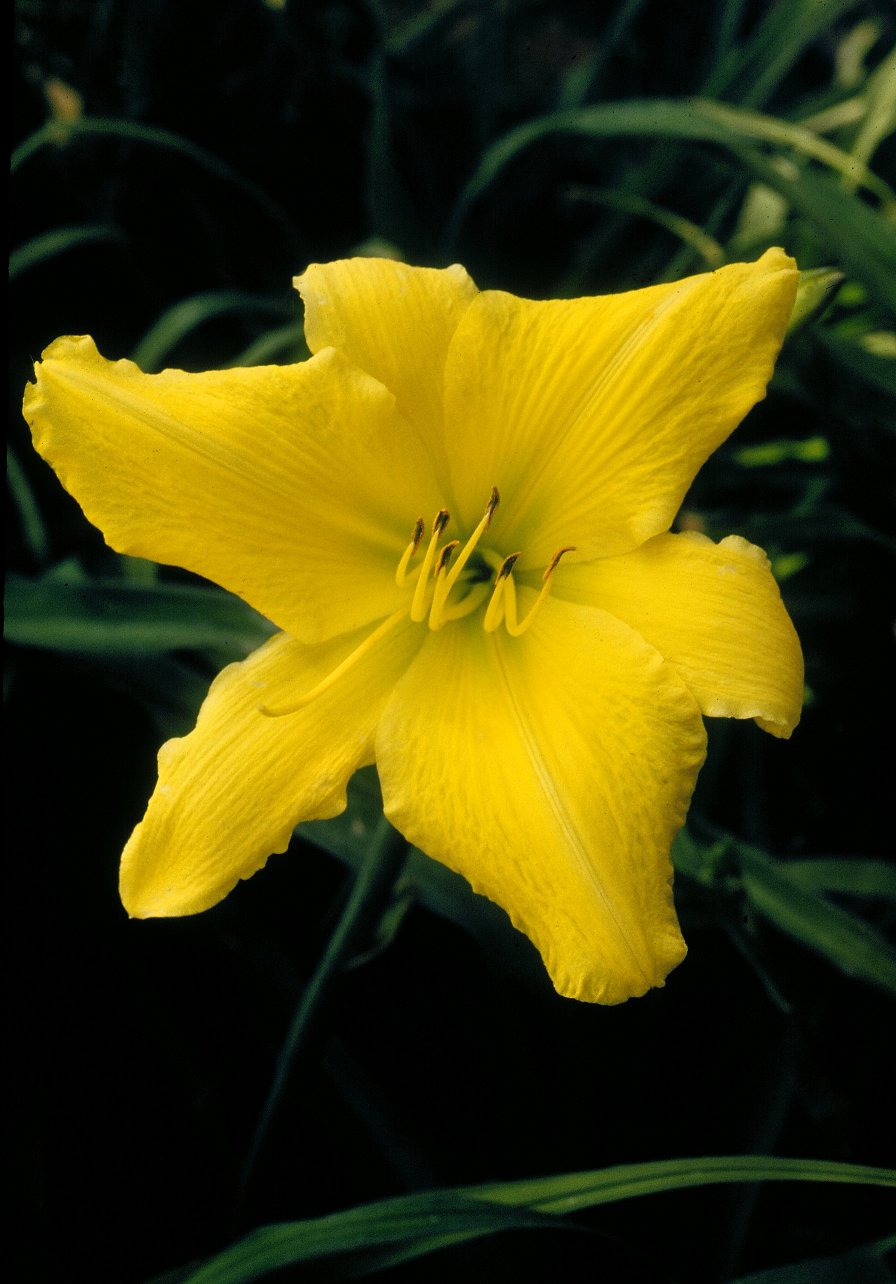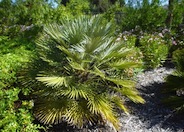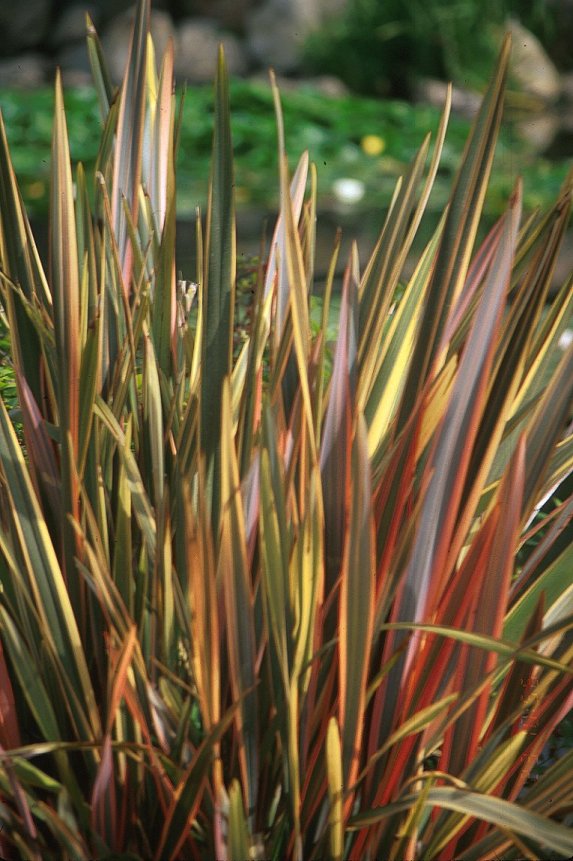
Common name:King Palm
Botanical name:Archontophoenix cunninghamiana
This is a beautiful palm which grows 40' or higher with a 10'-15' spread. The feathery leaves can grow 10' in length and are green above and gray beneath. It tolerates shade and can grow beneath tall trees for a long time if needed. It 's unique because it can be used as an indoor plant and will tolerate temperatures down to 28 degrees F.

Common name:New Zealand Flax, Wings of Gold
Botanical name:Phormium 'Wings of Gold'
The Phormium is a dwarf, growing to only 2'-3' tall. The stiff, vertical leaves are olive green in color with a yellow margin. It should be grown under full to part sun.

Common name:Daylily, D. Moon Hybrid
Botanical name:Hemerocallis 'D. Moon'
This Daylily has clear yellow blooms above handsome foliage. It has even bloomed in January!

Common name:New Zealand Flax, Purple
Botanical name:Phormium tenax 'Atropurpureum'
Phormium tenax 'Atropurpureum' is an evergreen perennial. Big, dramatic plant composed of many swordlike, stiffly vertical leaves can reach 5' tall. Leaves are purple red. Flowers stems reach high above leaves, bearing clusters of 1"-2" blossoms in dark red.

Common name:Mediterranean Fan palm
Botanical name:Chamaerops humilis
Slow growing to 20' tall but very hardy, the Mediterranean Fan palm is clump forming with rich green foliage. It can be used as a good container subject. It does best in full sun or partial shade. Petioles have sharp spines.

Common name:Rainbow Warrior New Zealand Flax
Botanical name:Phormium tenax 'Rainbow Warrior'
New Zealand Flax is an excellent accent plant for the garden. Evergreen leaves are long, narrow, and grow upright. Clusters of flowers grow on spikes above the foliage in late spring and summer. 'Rainbow Warrier' grows 3'-4' tall, 5'-6' wide. Leaves are darker salmon, turning cream as they age. Foliage turns deep red in winter.
Designer:
Photographer: GardenSoft
Practice grass-cycling by leaving short grass clippings on lawns after mowing, so that nutrients and organic matter are returned to the soil.
Attract, or buy beneficial insects such as ladybugs and lacewings to control pest outbreaks in your garden.